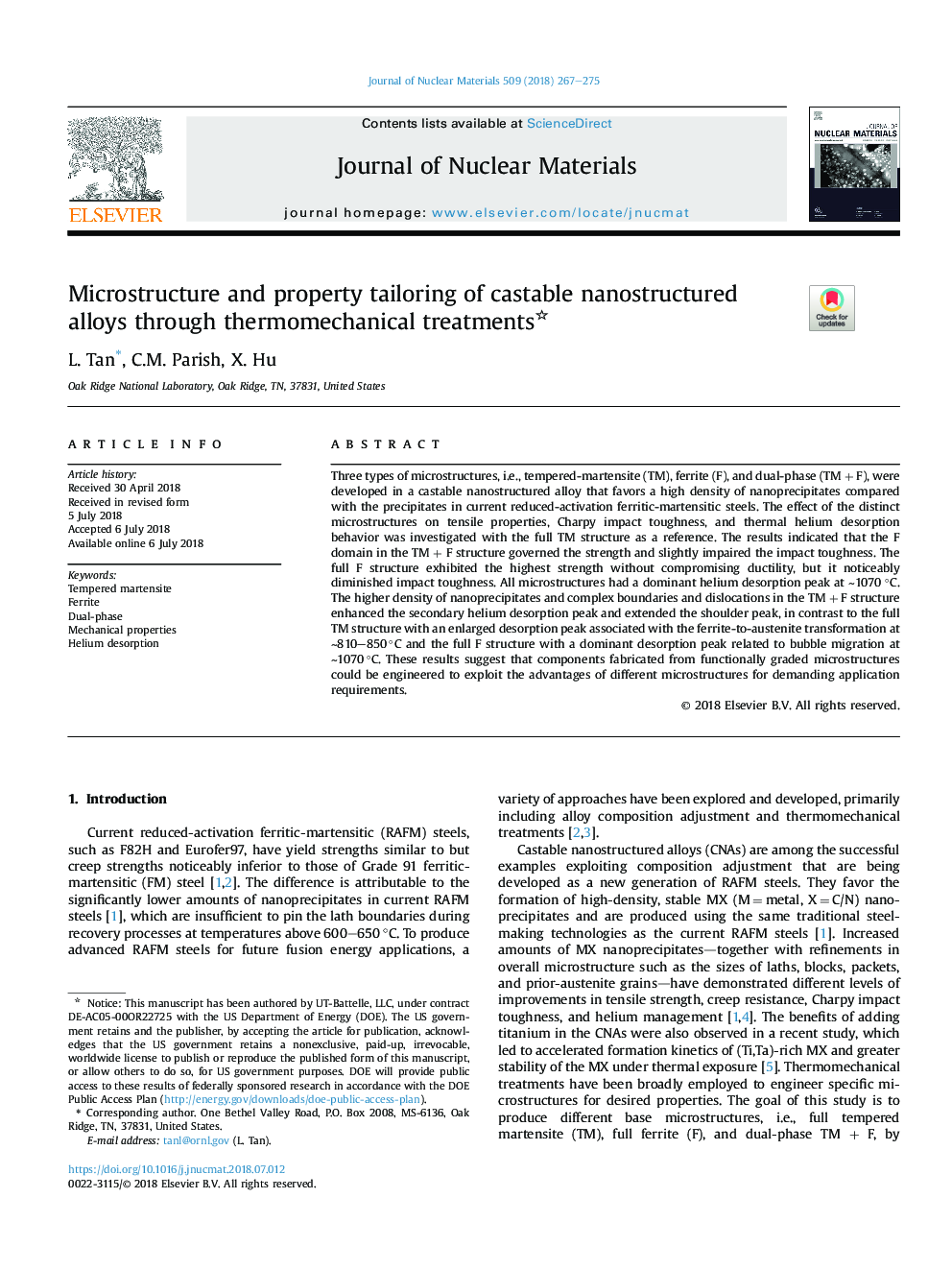| Article ID | Journal | Published Year | Pages | File Type |
|---|---|---|---|---|
| 7962937 | Journal of Nuclear Materials | 2018 | 9 Pages |
Abstract
Three types of microstructures, i.e., tempered-martensite (TM), ferrite (F), and dual-phase (TM + F), were developed in a castable nanostructured alloy that favors a high density of nanoprecipitates compared with the precipitates in current reduced-activation ferritic-martensitic steels. The effect of the distinct microstructures on tensile properties, Charpy impact toughness, and thermal helium desorption behavior was investigated with the full TM structure as a reference. The results indicated that the F domain in the TM + F structure governed the strength and slightly impaired the impact toughness. The full F structure exhibited the highest strength without compromising ductility, but it noticeably diminished impact toughness. All microstructures had a dominant helium desorption peak at â¼1070 °C. The higher density of nanoprecipitates and complex boundaries and dislocations in the TM + F structure enhanced the secondary helium desorption peak and extended the shoulder peak, in contrast to the full TM structure with an enlarged desorption peak associated with the ferrite-to-austenite transformation at â¼810-850â¯Â°C and the full F structure with a dominant desorption peak related to bubble migration at â¼1070â¯Â°C. These results suggest that components fabricated from functionally graded microstructures could be engineered to exploit the advantages of different microstructures for demanding application requirements.
Related Topics
Physical Sciences and Engineering
Energy
Nuclear Energy and Engineering
Authors
L. Tan, C.M. Parish, X. Hu,
